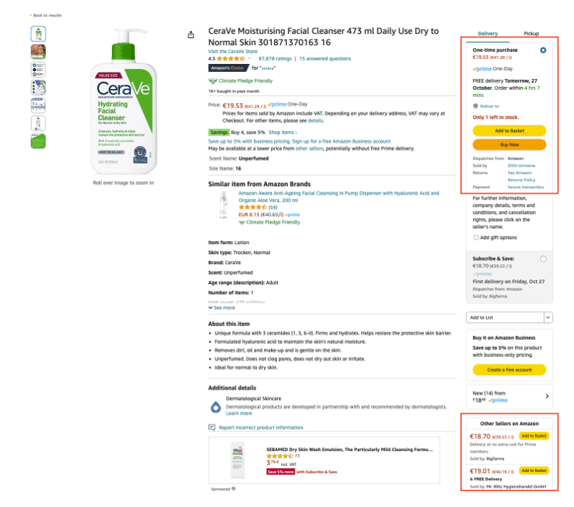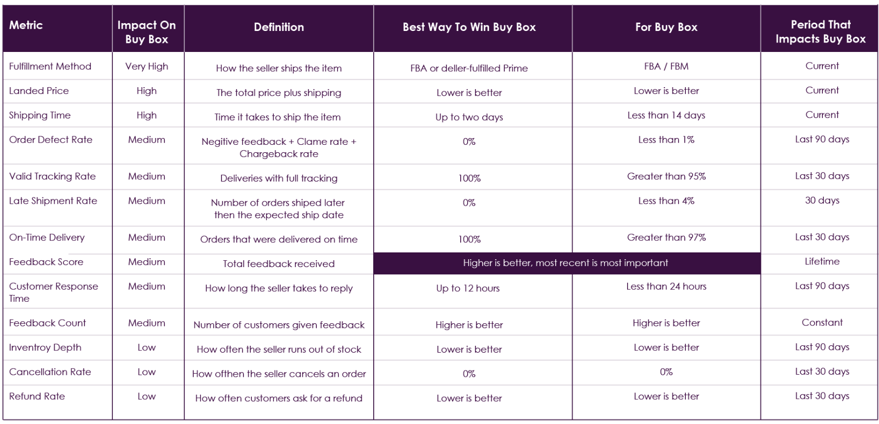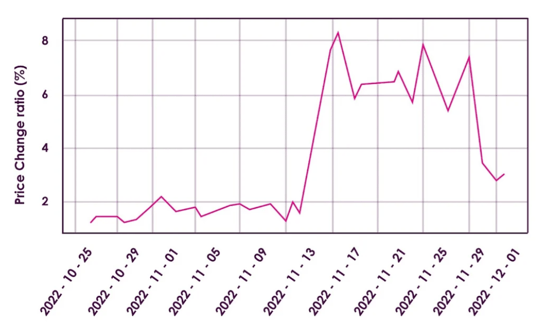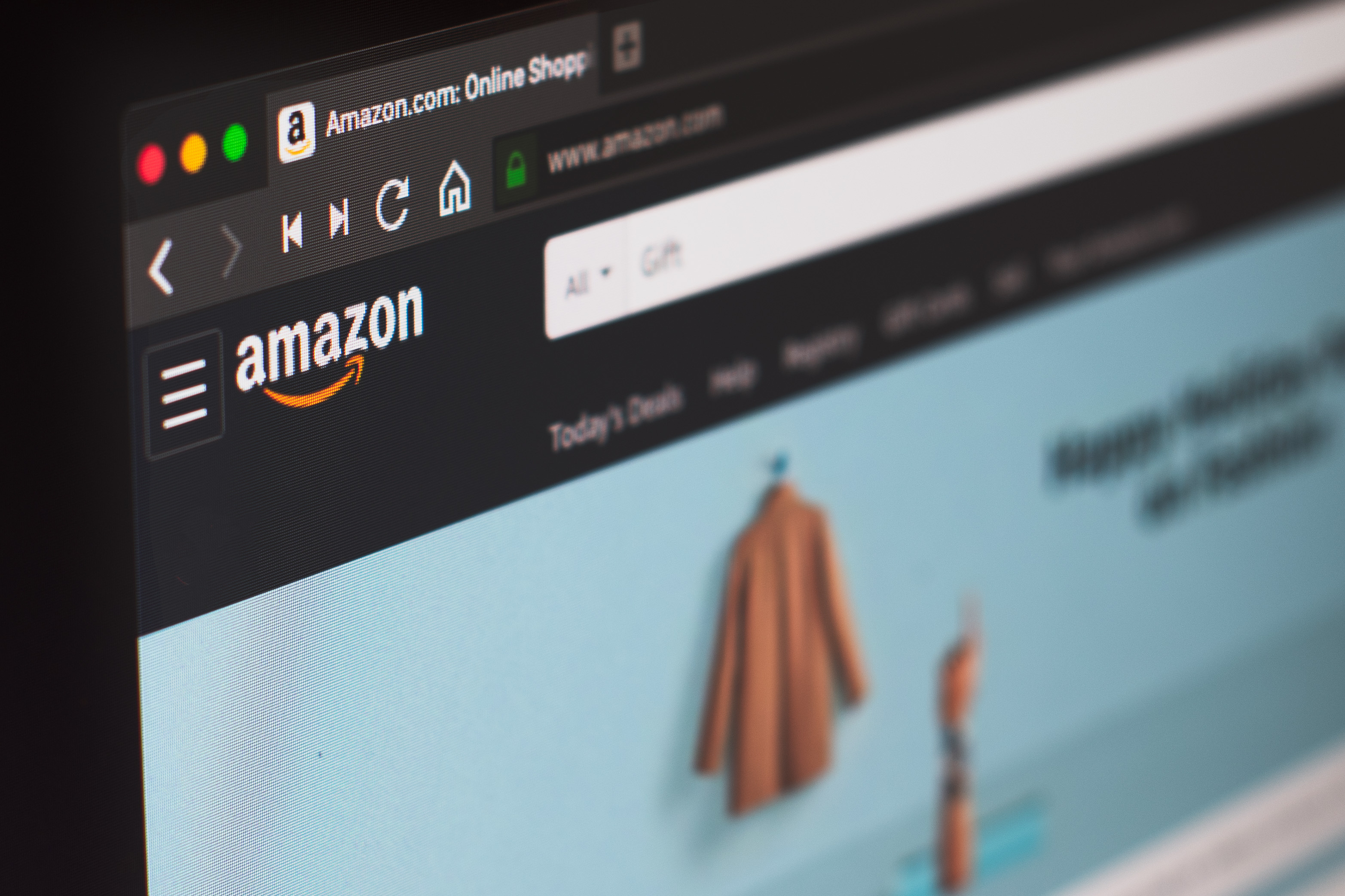Marketplaces are one of the best channels for brands and vendors to create a successful e-commerce business. However, considering how many vendors are listed on the many marketplaces, not everyone can be highly successful at making sales. How do some find success and others don’t?
A lot of it comes down to the quality of a vendor’s product listings, and whether or not they win the ultra-important Buy Box. In this article, Omnia breaks down the unique aspects of product listings on marketplaces and offers some best practices to win the Buy Box.
Why product listings on marketplaces are a special case
E-commerce businesses should be treating their marketplace product listings differently than listings on D2C or retail channels. Because there are so many sellers competing for sales on marketplaces – for example, Amazon has 9.7 million sellers globally, with about 2 million active sellers – the listings on these sites must be optimised if the vendor wants to stand a chance against other sellers.
The fiercest competition is around who wins the Buy Box, where one listing will be shown with the “Add to Basket” or “Buy Now” button, while offers from other sellers are shown in a secondary position. The example below shows the Buy Box for a Cerave skincare product on Amazon.

In a majority of cases, the vendor who wins the Buy Box will win the sale. On Amazon, 82% of sales go through the Buy Box, and the figure is even higher for purchases made on mobile.
Some vendors, such as Zalando, claim not to have a Buy Box, likely to avoid consumers seeing their platform as one where prices can change within minutes due to high competition.
“We do not want to enable a price war. Therefore, only one vendor offers a product. If more vendors offer the same product, convenience decides who is listed on the platform. This is calculated by an algorithm on the basis of factors such as shipment speed, trustworthiness and return speed. There is no pressure on price to win any kind of Buy Box.”
Zalando’s VP of Direct to Consumer Carsten Keller
Regardless of how a specific marketplace chooses to word their offerings, for the sake of simplicity, we will refer to the existence of a Buy Box if there is competition among third-party sellers and the marketplace must make decisions about which offer is shown to the end consumer.
Best practices to optimise product listings and win the Buy Box
In order to even be in the running to win the Buy Box, sellers must have optimised product listings that check all the key boxes. Let’s first run through some best practices for improving product listings for marketplaces in general, then go over some tips for specific marketplaces.
General product listing best practices
-
Optimise product titles: Marketplaces may have slightly varied requirements for certain aspects of product titles like character count, but a few things are consistent across sites. Product titles should include relevant keywords and provide the necessary product information without sounding like spam. Keep them concise and descriptive, covering attributes like brand, make, model, size, material or colour (where relevant). Also consider including nouns that customers often search for: “Adidas Stan Smith sneakers” versus “Adidas Stan Smith”.
-
Use high-quality, eye-catching visuals: Each product listing should include high-resolution images from multiple angles to showcase your product. Clear, well-lit photos help build trust and provide customers with a better understanding of what they're purchasing. Videos showcasing the product are an added bonus here.
-
Write detailed product descriptions: Write informative and engaging product descriptions. Highlight key features, benefits and any unique selling points to help potential buyers make informed decisions.
-
Make consistent updates: Product listings shouldn’t be stagnant; continue to update the information and visuals to keep them fresh and ensure they are optimised for current trends. Analyse what’s working and what’s not so you can make changes to improve performance. You’ll also need to keep an eye on marketplace rules; if they change which types of media are allowed, for example, you’ll want to optimise for that.
-
Localise content: If the marketplace services multiple countries or regions with different languages, make sure content is localised. That means listings are translated into the necessary languages, but also that the correct currencies are displayed and the audience you’re speaking to is reflected in the copy.
-
Automate where possible: Especially when selling a high volume of products, it’s important to auto-populate listings when possible, whether for language translation, promotion, or something else. Manual updates will be much trickier as the volume grows, and if a product listing ends up being outdated, it can hurt your chances at the Buy Box.
-
Use dynamic pricing: Price is one of the major factors that decides if you win the buy box. In some marketplaces, like Amazon, you will have to be priced within the top sellers to stand a chance of winning. For other marketplaces, price is a little less dominant, but you still need to be within a certain range of your competitors. As competitor prices are continuously changing, having the ability to dynamically reprice will ensure you are always still within the range. Dynamic pricing software like Omnia can help with this.
There are other factors that have less to do with product listings, but are still known to impact who is shown in the Buy Box. These include:
-
Shipping speed: Offering fast shipping will help in two ways: 1) it’s rewarded by the marketplace itself, and 2) it increases likelihood of positive customer reviews, which also boosts Buy Box prospects.
-
Stock availability: If a seller runs out of inventory, the Buy Box will go to someone else. These levels also need to be consistent.
-
Customer service: Both the marketplace and the customers will take note of sellers that respond quickly to customer questions and issues.
Marketplace-specific best practices for product listings
Whether they call it a Buy Box or not, marketplaces with third-party vendors selling the same products will have an algorithm to decide which offer is shown. Some marketplaces are clear about what it takes to win their Buy Box, but for most marketplaces, the “secret sauce” of the algorithm is unconfirmed. Many in the industry have studied the Buy Box on different sites to understand what makes a winning product listing.
Amazon
There is unfortunately no easy shortcut to win the Buy Box on Amazon. However, there are a number of factors that have been shown to impact which offer is shown, and BigCommerce even put together a cheat sheet ranking metrics by their impact on the Buy Box:

eBay
eBay has its own search engine called Cassini, which prioritises showing products with the highest conversion rates. To convert more searches and win higher placement, keyword choice is crucial, and sellers can use Cassini’s internal keyword research tool to find the right primary and secondary keywords. These should be used in every field in the product listing for best results.
Bol.com
Bol refers to their Buy Box as the “Buying Block”. Industry experts at Omnia have found that the battle for the Buying Block is won by the seller that has the best offer in terms of price, delivery time, inventory levels and customer service. Service and ratings are used more as a threshold, meaning that if a seller reaches a certain level, their other factors like price determine the Buying Block win.
Zalando
Omnia ran a pricing analysis on Zalando before, during and after Black Friday 2022. The results indicated that, historically, price was likely not the main driver for winning the Zalando Buy Box; however, during the Black Friday period, pricing became a top factor, sparking lower prices and tougher competition.

With Omnia’s data, a price-change ratio of 0% means the price never changes. A ratio of 100% means the price always changed at every 15-minute observation time stamp. A ratio of 1.5% would indicate a price change once per day.
As you can see in the chart above, the price-change ratio on Zalando grew to an average of 7% during the Black Friday period, indicating that the price would change once every five hours.
Outside of competition scenarios like Black Friday, Omnia found two other factors that influenced the Buy Box:
-
Shipping speed: Omnia data suggests that to win the Buy Box, a seller must have a maximum delivery period of four days; but this goes even lower if there is more vendor competition for a specific product.
-
Stock availability: As the chart below indicates, the Buy Box changes at a rate of 2.1% when all products are available. When products are unavailable for up to 24 hours, however, the rate doubles to 4.09%, indicating the importance of stock availability as a seller on Zalando.

Conclusion
While much of the industry conversation around Buy Boxes often focuses on price, Omnia data and the other studies quoted above show that product listings and other convenience factors like stock availability, delivery times and even customer response times can also impact who wins the Buy Box.
Especially during times of high competition like Black Friday, or when selling products with many competing vendors, each marketplace seller must craft high-quality and compelling product listings, and find the right competitive pricing strategy to set their offers apart.





